Life changing is one of the great inevitabilities but your home, if you’re lucky, will remain a constant feature. A constant, yet shape-shifting feature that might serve as your place of solace and retreat one year and a purely practical place to rest your head while other aspects of life take precedence another. We explore some of the particular life changes and how this might impact your existence at home.
To rent or to buy
If you’re fortunate enough, you may be in a position to question whether the time has come for you to take the plunge and invest in buying your first home. Whether you’re going it alone, proceeding as a couple or buddying up, it’s a huge decision to make. Here are some of the key considerations:
Going it alone
Thinking about stepping off the renting hamster wheel and buying your first property? It’s a huge leap towards independence. With that independence comes responsibility – weigh up whether you’re ready to haggle with the electrician or plumber next time the lights mysteriously go out or the sink won’t drain. It’s these little things that we can overlook when we’re considering whether to buy or not.
Our biggest piece of advice is to get to know your finances incredibly intimately and make sure that you're poised to keep up with repayments. And, if you’re looking to buy a more run-down property and make renovations later, seek advice from our in-house Finance team.
Proceeding as a couple
As we recently explored in our article, ‘Sorry, no couples’, the current UK rental market can feel an unforgiving place for couples looking to rent together on a budget. And it’s not just because of dizzying rents, the surging demand for rooms in shared houses (particularly in city centres) can lead to intense competition, bidding wars and a near-impossible set of criteria to fulfill.
It can lead a number of people to consider committing to a shared mortgage sooner than they might have otherwise. As with any life decision, it comes with pros and cons and it’s really important to understand whether you’re opting in to be Joint Tenants or Tenants in Common.
It can be tempting to jump straight to buying if the amount you’ll be likely to spend renting is equal to or more than mortgage repayments but make sure you’ve read the fine print and suitably tested the waters. Looking to delay buying a little while longer? Don’t despair with renting – this guide from Zoopla outlines top tips for how to bag your ideal rental opportunity.

Buddying up
While it’s still considered a more unusual choice, as house prices have risen faster than wages in recent years, more people are buddying up and buying houses as a group. Similarly to those who buy in a couple, buying as a group will also require you to make important decisions about whether you decide to be Joint Tenants or Tenants in Common. And that’s on top of how you manage sharing your space long-term.
Top tips for making a home your own if you’re renting:
Our 2023 Happy Home report found that one of the most significant factors when it comes to being happy at home is for it to reflect your tastes. This can be challenging in a rented home where you’re restricted by how you can decorate and to what extent. Here’s just a couple of things to consider that can help you retain your individuality at home.
- Have a chat with your landlord to discuss what you’d like to improve and establish a rapport and willingness to partake in DIY for projects like painting the walls or putting up shelves.
- Did your rented home come with a sofa you can’t stand? Soft furnishings like throws will be your friend and, in the event that you’re not able to repaint walls or replace furniture, they can introduce some comfort and a much-needed pop of print or colour.
- While you might not have free rein over the interior design for all aspects of your rented home, the lighting you choose is an opportunity to get creative and add a personal touch to a room.
Buying your first home
There’s no doubt about it, investing in your first home is a big deal – especially in the current climate. If it’s your first time, there are so many factors to consider before making a decision. One common question that emerges amongst first-time home buyers is whether they should buy a fixer-upper house that could save them money but require work or a more finished home. Here are some of the pros and cons of opting for a home that’s in need of renovations:
Pros:
- You can save money on the cost of a property if it requires renovation work
- Building on a fixer-upper home can mean creating your ideal home from the ground up
- Renovating a more run-down property can increase its value significantly and may serve as an important stepping stone towards getting on the property ladder
Cons:
- Renovations can be expensive
- Building work and construction can cause severe disruption
- If the disruption from your renovations is extreme, you may need to spend to stay elsewhere throughout the project
If you’re considering buying your first home, it’ll be in your interest to assess whether you’re up to the task of large scale renovation and the upheaval that comes with that. Executed correctly, it can totally transform your home and allow it to be built in your vision. We also recently discovered that the views from your property are a more significant predictor of how happy we are than our satisfaction with sunlight levels in our homes. So, if you’re house hunting, we suggest visiting during the day so you can clearly make out the views before you commit.
To begin discussing your renovation or extension ideas, book a free consultation with one of our in-house experts. To give you a sense of a Resi transformation project, see our before and after photos of completed renovations in Merton below:
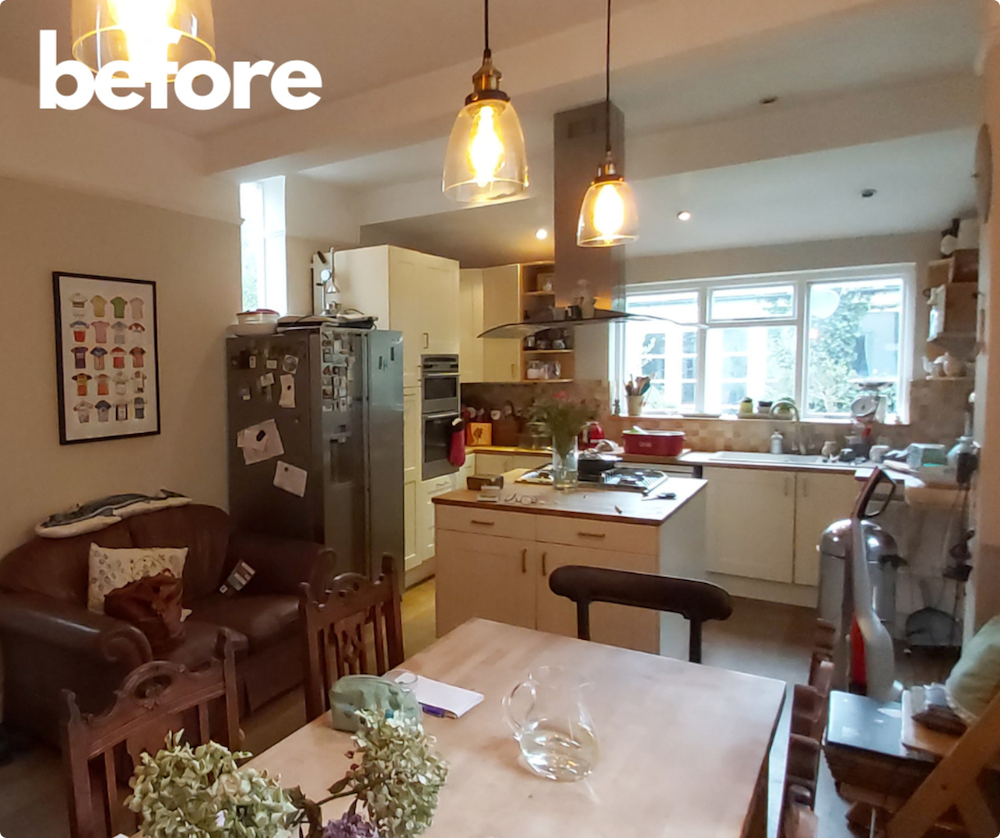 A before shot from a Resi project in Merton
A before shot from a Resi project in Merton
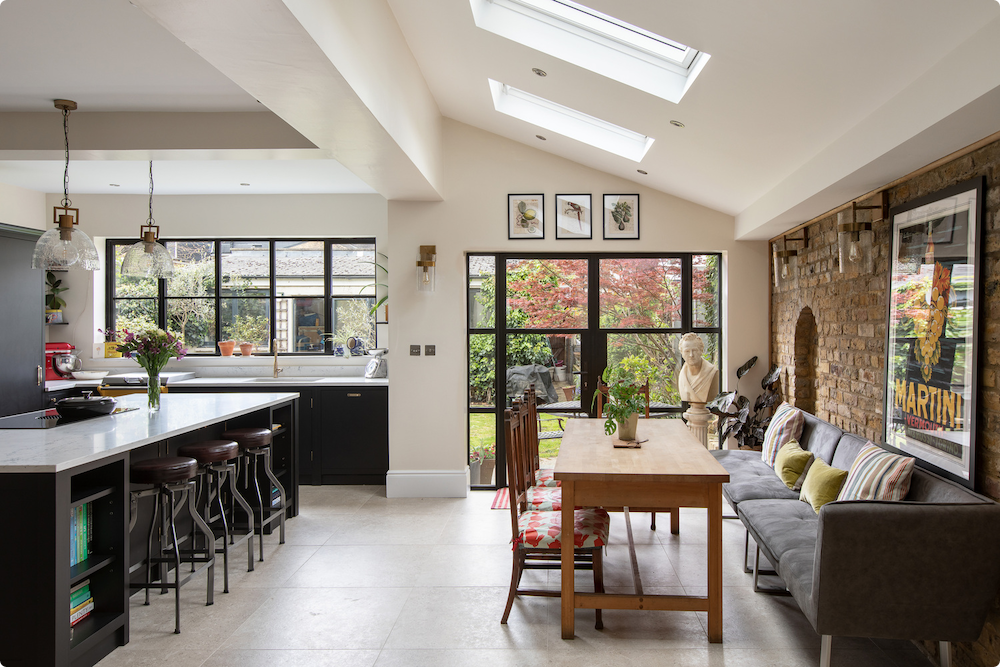 An after shot of a completed Resi kitchen renovation in Merton
An after shot of a completed Resi kitchen renovation in Merton
© Matt Gamble
Getting your home prepared for little ones
One of the most significant ways that your life can change is welcoming little ones into it. If you reach this moment in time and feel as though your home is a little less prepared than you are, don’t panic. If you decide to improve, rather than move from the home you have, there are plenty of ways to grow your family home.
Many people choose to opt for a house extension to create space for a nursery. Below are some of the most popular types of extension to create children’s rooms and why they might be suitable for your home. For further cost insights, try out our Quick Quote Calculator to see how much each type of extensions could set you back.
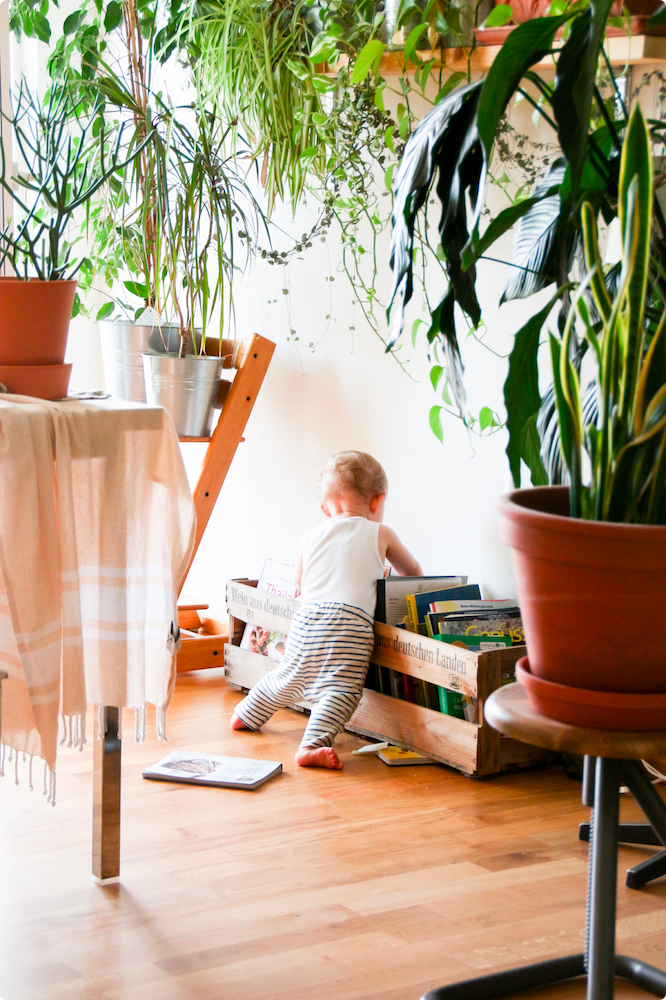
Side extension
Side extensions can be single-storey or double-storey, depending on your property. They essentially take advantage of any dead space to the side of a home – for example, in old Victorian homes where there are unused alleyways between houses. This extra space can transform the layout of your home and create a cosy snug for a cot or even a separate room depending on which type of layout you choose. Book a free architectural call with one of our in-house experts to see if this type of extension could be suitable for your home.
The below example is from Resi’s very own portfolio of a completed side extension at a home in Merton. It beautifully shows how this type of extension can boost the amount of light inside the home and open up extra pockets of space in the home. Here it has been used for a cosy dining area that leads through to a beautiful living room but it could easily be adapted for a baby’s room:
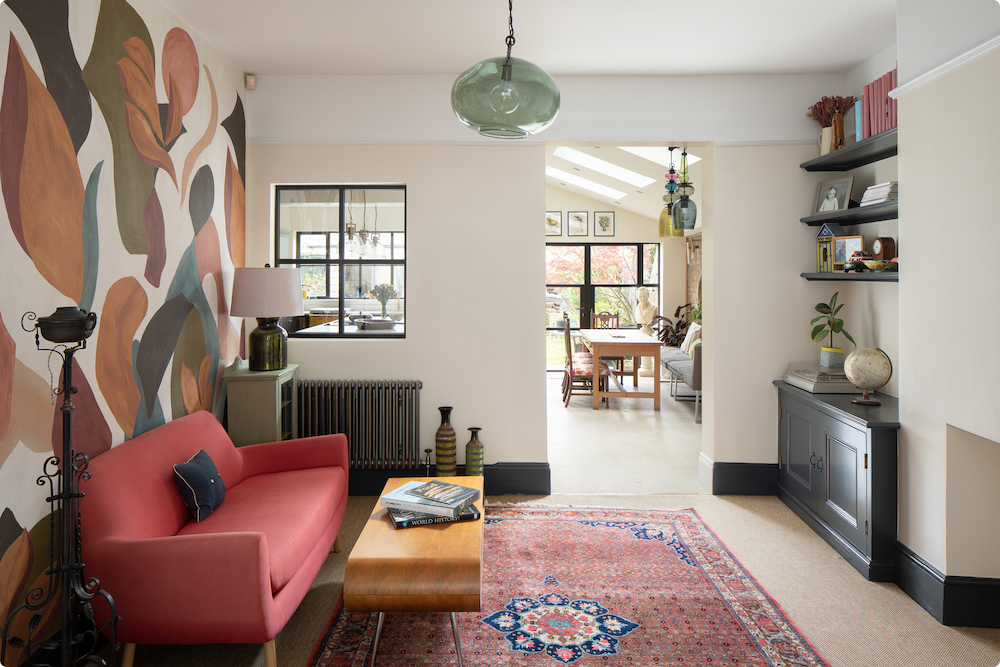 © Matt Gamble
© Matt Gamble
Rear extension
Rear extensions may be ideal for your property if you’re looking to create extra space in your home but you don’t have any available space to the side of your house. Not only can extending your home to the back of your property maximise the space inside your home and create the opportunity for recalibrating your layout, it can increase the amount of natural light and add value to your home. The effect of this is benefiting you in the short term with more practical space for your little one and boosting your home’s financial value should you choose to sell it at some point in the future.
Wraparound extension
Wraparound extensions are a combination of a side extension and a rear extension. For properties with the available space, this is one of the most effective types of extension for creating space. Naturally, it’s one of the more disruptive methods of extending your home so, if you’re looking to get the ball rolling fast, it could be in your interest to move out of your home while the works are going on. If you have a little one on the way, it’s a fantastic way of opening up your home and crafting some much-needed sleeping and storage room.
They grow up so fast
Blink and your kids will have started crawling, turn around for a second and they’re teenagers. All these changes happen unbelievably quickly and your home is going to have to work overtime to keep up with your growing kids. The extensions we previously mentioned still stand for growing kids. In fact, below is an example from a growing family in Lewisham who opted for a side extension as a way of increasing their kitchen size and building an additional two bedrooms.
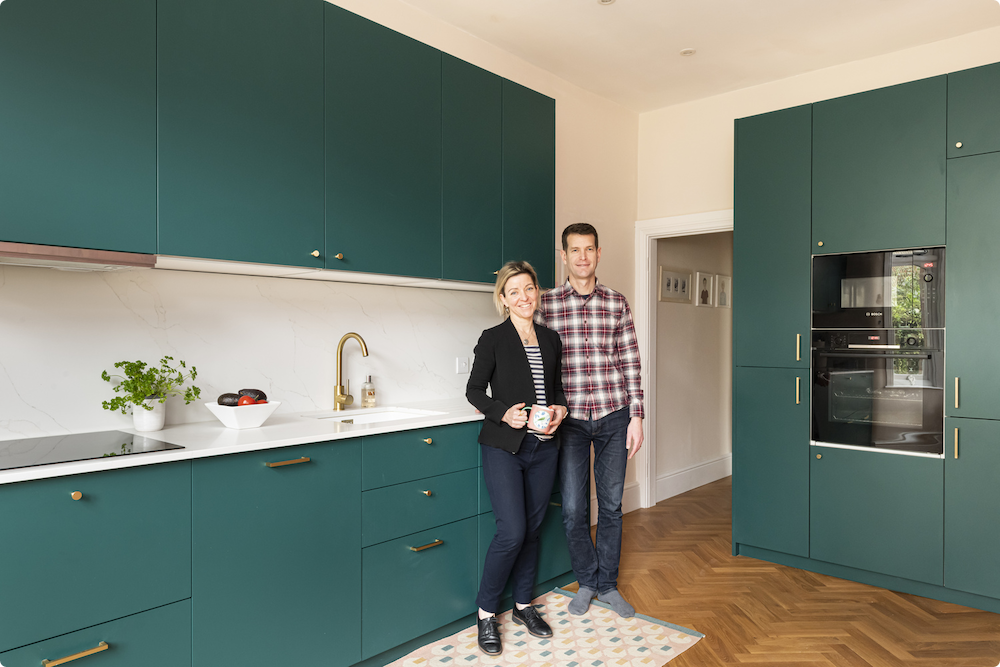
© Veronica Rodriguez
Garden rooms
As your children grow up, both your need for privacy and theirs is likely to become more apparent. While there are plenty of ways of achieving this through creating broken-plan spaces in your home, you may consider a space that’s totally separate from the main property. We love garden rooms as a way of creating your own separate haven from the house. It also creates the opportunity for a totally adaptable space – a factor which, according to findings from our 2023 Happy Home Report, is more important to us than having extra rooms for dedicated purposes.
Garden rooms are separate structures from the main property and can either be built independently or adapted from unused garages. Thanks to their distance from the rest of the home and the inherent adaptability of the space, they can be used interchangeably as at-home office space, a games room, home cinema, workout space and cosy reading nook.
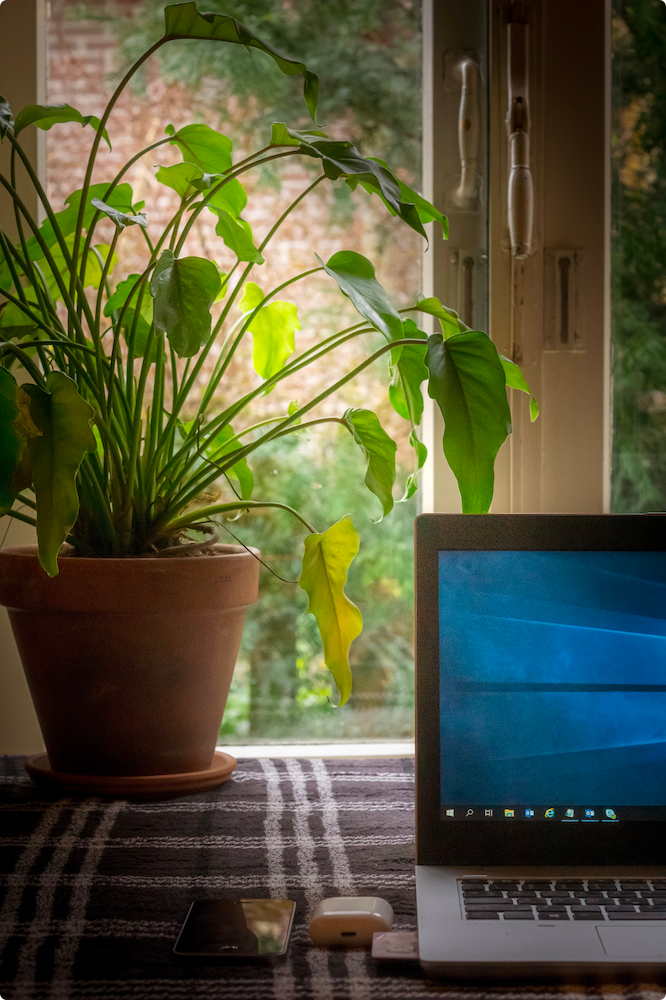
Make room for mobility challenges
Every family is different but a common challenge for many families is creating spaces that are easy to move through for those who have or develop mobility issues. With our expertise we believe that we can create designsand layouts that make life easier for you and your household. Here’s are some of the simple ways we’d recommend updating your space.
Wider door frames
If you live with someone who occasionally or always uses a wheelchair to get around, the likelihood is you’ve heard them complain about just how narrow some doorways are! A simple fix that’ll make each day just a little more carefree is to increase the width so that they can move easily through. You may just find that it makes the rooms feel larger and more open too!
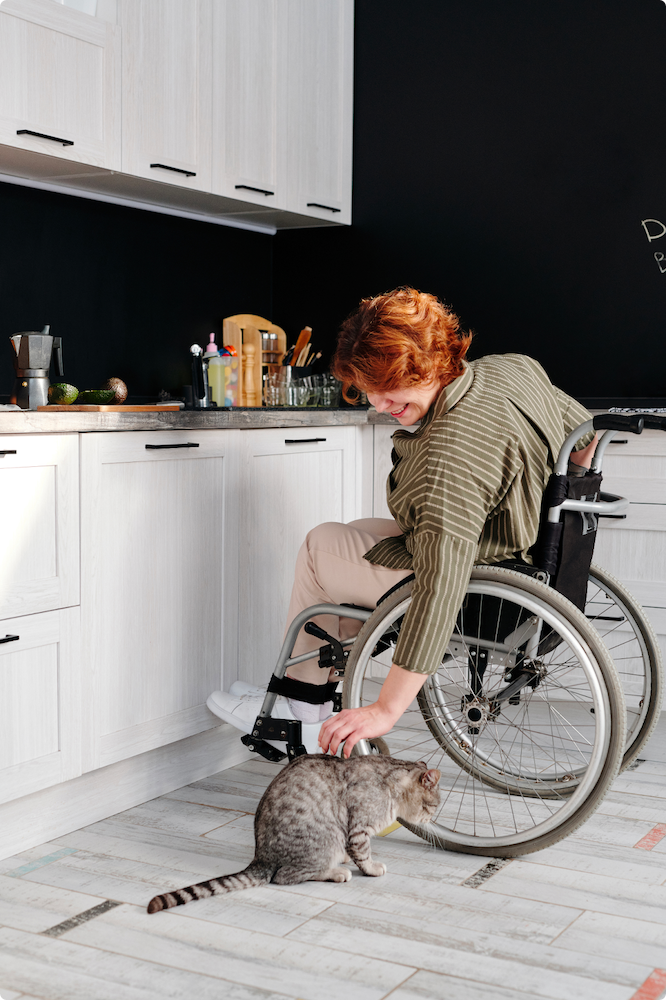
Rethink your bathroom
We’ve explored how to create bathrooms that are adaptable for every stage of life and our top takeaways for creating bathrooms that are suitable for those with mobility challenges include having side door baths or show seats installed so yourself or your family member can enjoy some pampering in privacy. We’d also recommend having some nifty handles installed around key utilities for ease and ensuring that your renovated bathroom isn’t hindered by obstructive steps up or down to enter.
If you’d like to chat over any of these ideas or any other ways to amend your home’s layout, book a free advice call with our knowledgeable team.
Creating space for older relatives
Depending on the needs and preferences of the older family members in your life, there are a few key factors that you’ll want to consider creating if they’re moving into your home. These include space, privacy, safety and comfort. Each of these elements will be important for creating areas of your home that they can flourish in and retaining spaces where you have privacy too. In addition to creating an extra room with either a side, rear or wraparound extension, here’s another way you could create room:

The “Granny Annexe”
This is a type of home extension that is resurging in popularity. They’re self-contained structures that are built either separately from or slightly attached to the main property. Despite their rather on-the-nose name, they could be incredibly helpful for keeping family life harmonious as the structure of your household changes. Their proximity to the main property allows for independence, privacy and convenience and company when needed. Learn more about how much it could cost you to build a granny annexe (otherwise known as a granny flat) here.
Don’t hesitate to book a free advice call with one of our in-house experts to make sure that your home can see you through any life changes in style.


 A before shot from a Resi project in Merton
A before shot from a Resi project in Merton An after shot of a completed Resi kitchen renovation in Merton
An after shot of a completed Resi kitchen renovation in Merton
 © Matt Gamble
© Matt Gamble






















